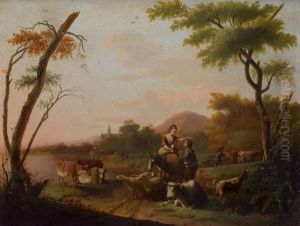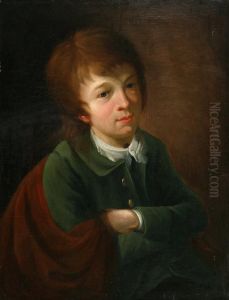Geradus Van Dinter Paintings
Gerardus van Dinter, born in 1802 in the Netherlands, was not widely recognized during his lifetime but has garnered attention posthumously for his contributions to the arts, particularly in the realm of printmaking and etching. His life and work reflect the broader artistic movements of the 19th century in Europe, a period marked by significant transformations in the arts, politics, and society. Van Dinter's body of work, though not extensive, demonstrates a keen eye for detail and a profound understanding of the etching process, making him a noteworthy figure in the history of European art.
Van Dinter's early life is shrouded in relative obscurity, with few records detailing his education and training in the arts. However, it is known that he was active during a time when the Romantic movement was giving way to Realism, and this transition is evident in his works. His etchings often depict landscapes and scenes of everyday life, capturing the essence of his subjects with a realism that was ahead of his time. Despite the quality and depth of his work, Van Dinter struggled to gain recognition during his lifetime, a fate not uncommon among artists of his era.
Throughout his career, Gerardus van Dinter remained largely detached from the main artistic circles of his time. This isolation may have contributed to his relative obscurity both during his life and in the years immediately following his death in 1868. It wasn't until the late 20th and early 21st centuries that art historians and collectors began to reevaluate his contributions to the field of printmaking. Today, Van Dinter's etchings are appreciated for their technical skill and artistic vision, and he is considered an important figure in the history of Dutch art.
Van Dinter's legacy is a testament to the often delayed recognition of talent and innovation in the art world. His work, once overlooked, now serves as a valuable example of the etching technique and its possibilities. As art historical interest in lesser-known artists has increased, Gerardus van Dinter has emerged from the shadows, offering a unique perspective on the 19th-century art scene. His life and work serve as a reminder of the diverse and rich contributions to art that can go unrecognized for generations, only to be rediscovered and celebrated in a new light.

